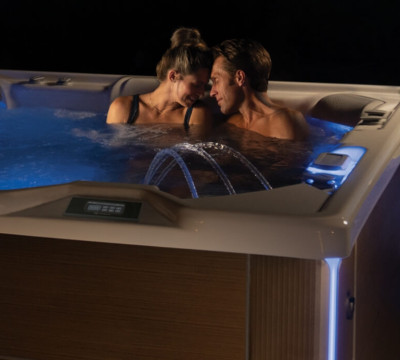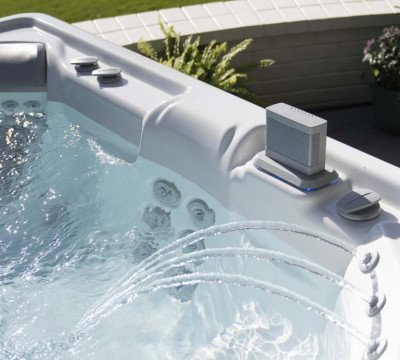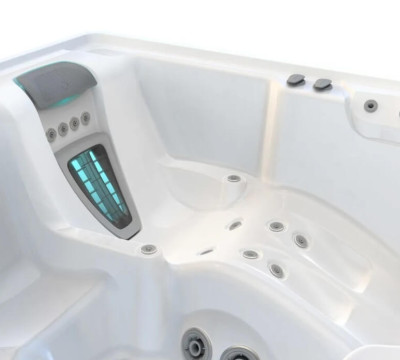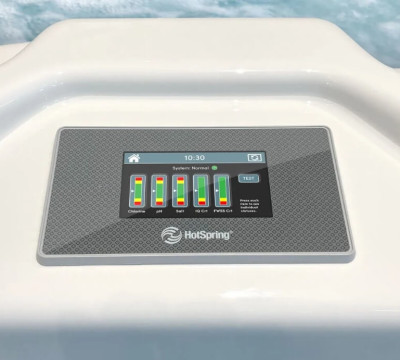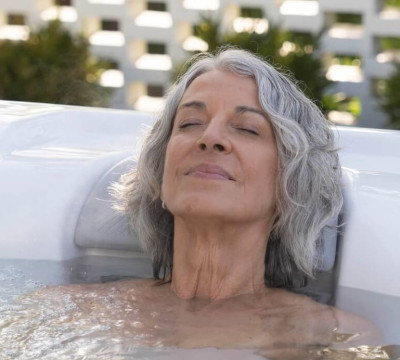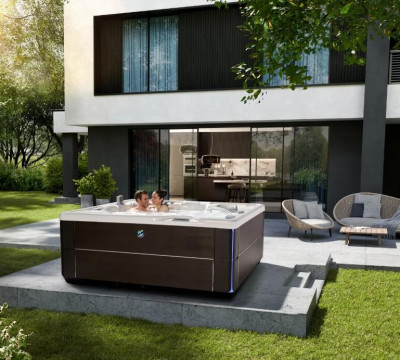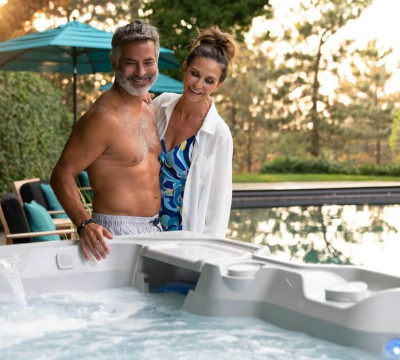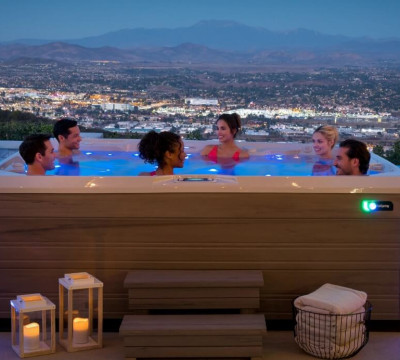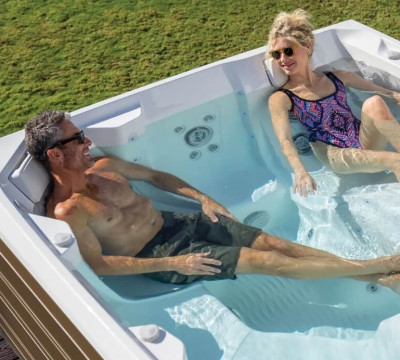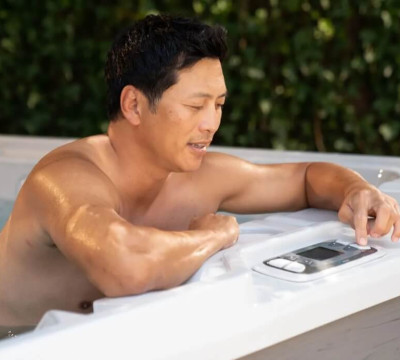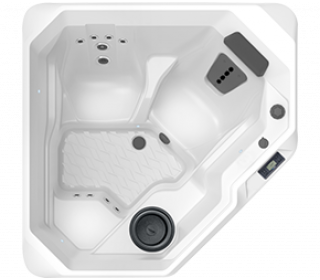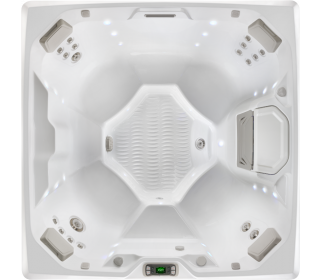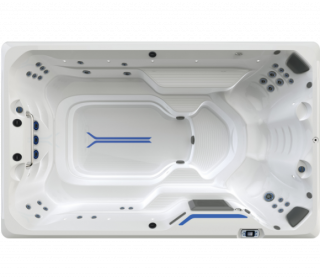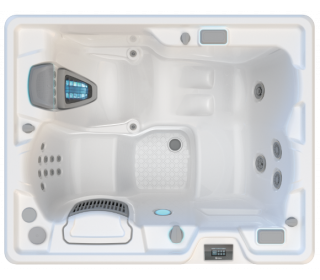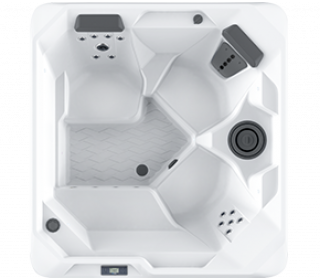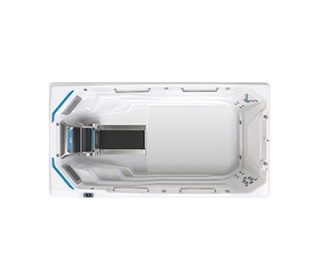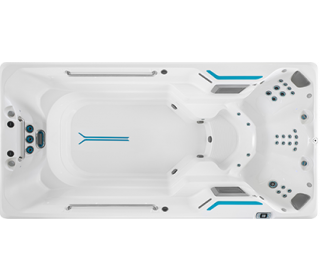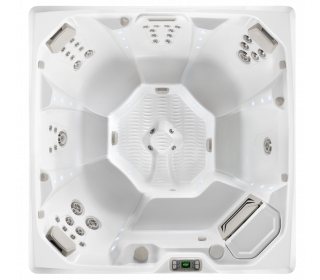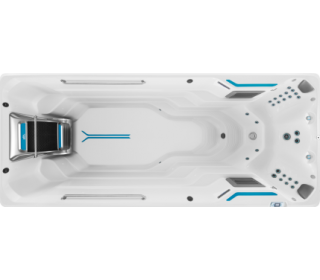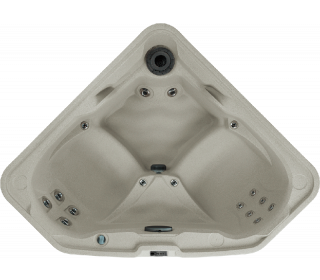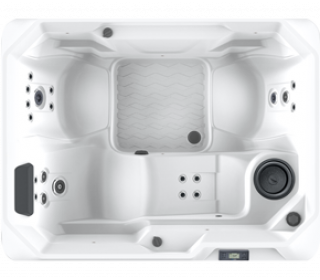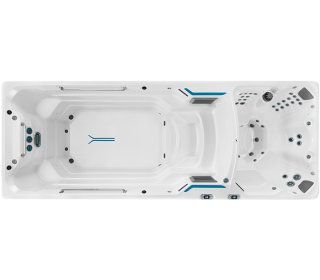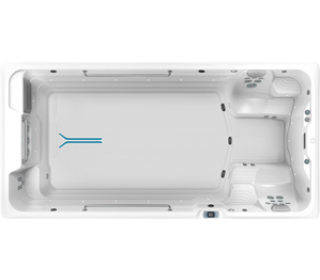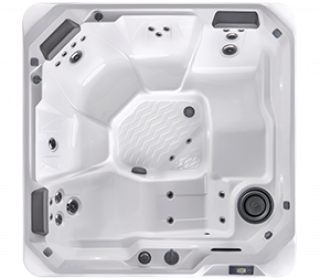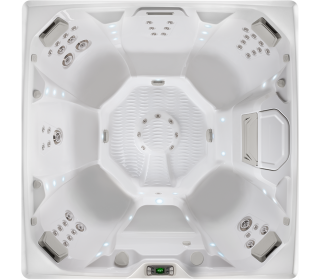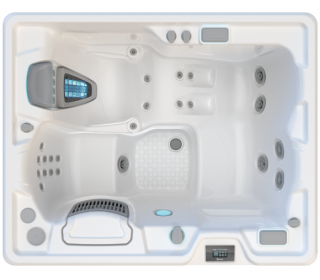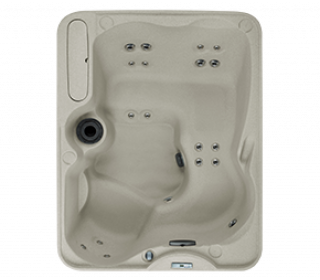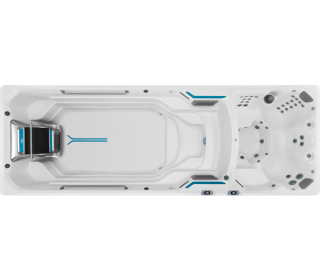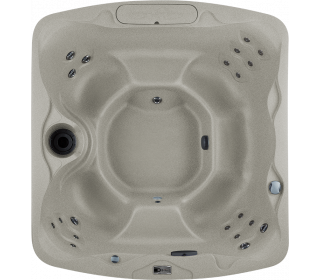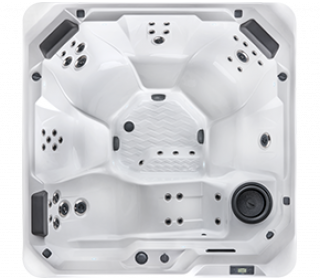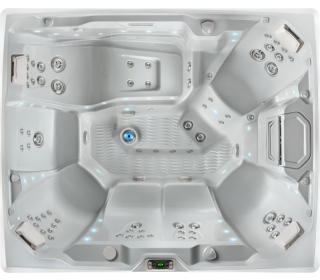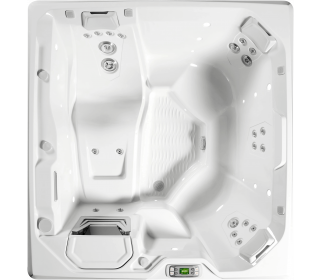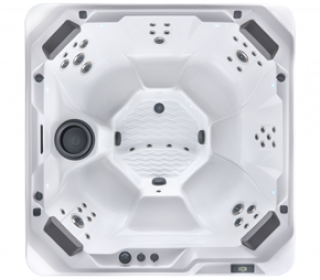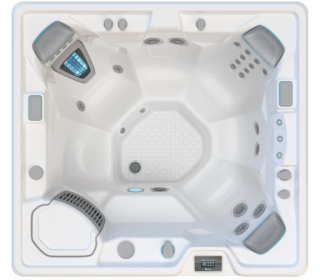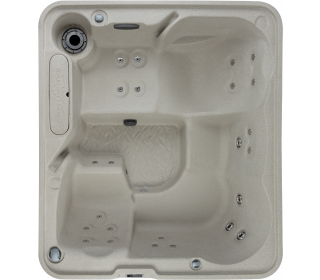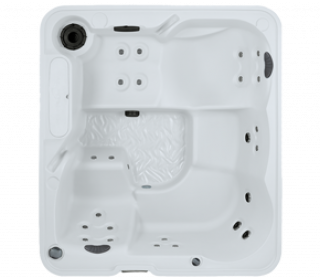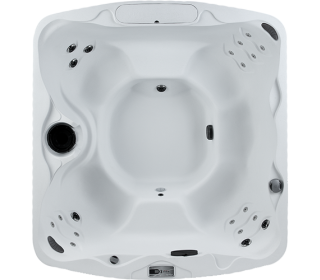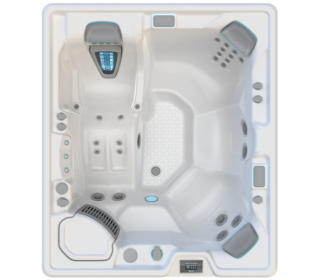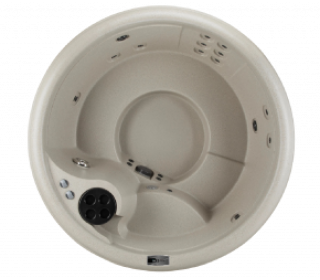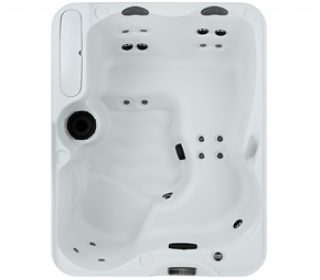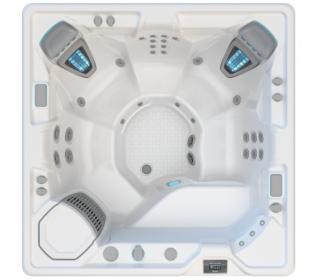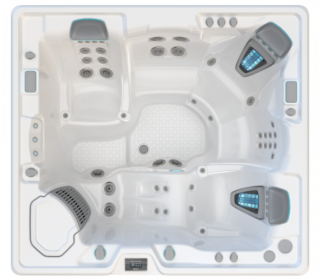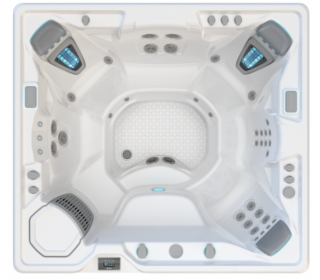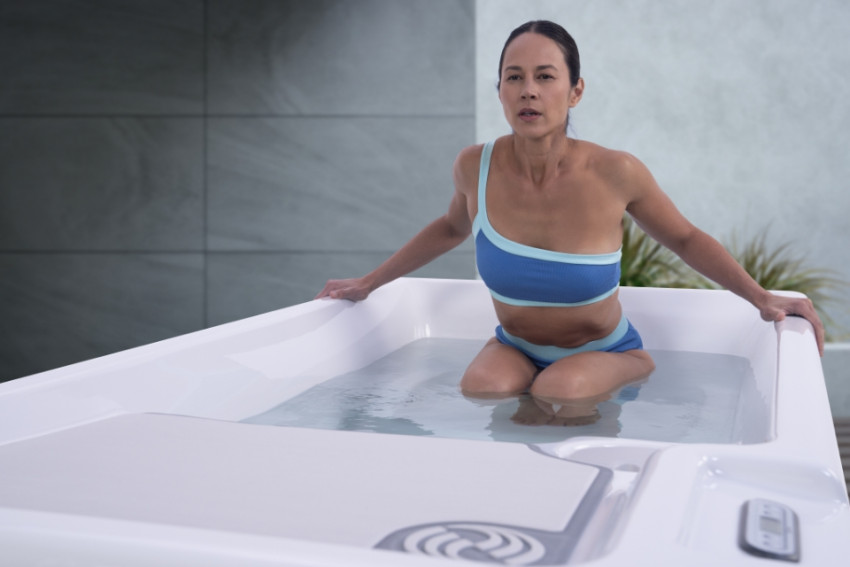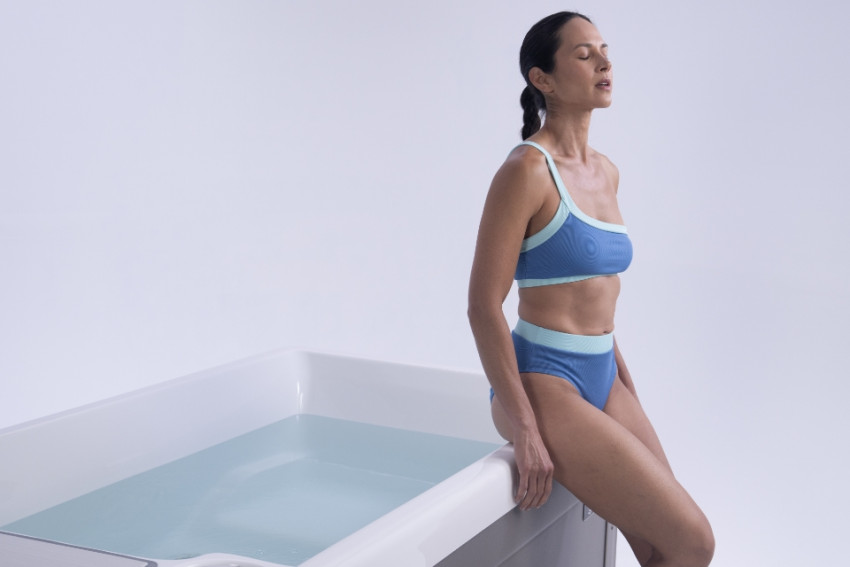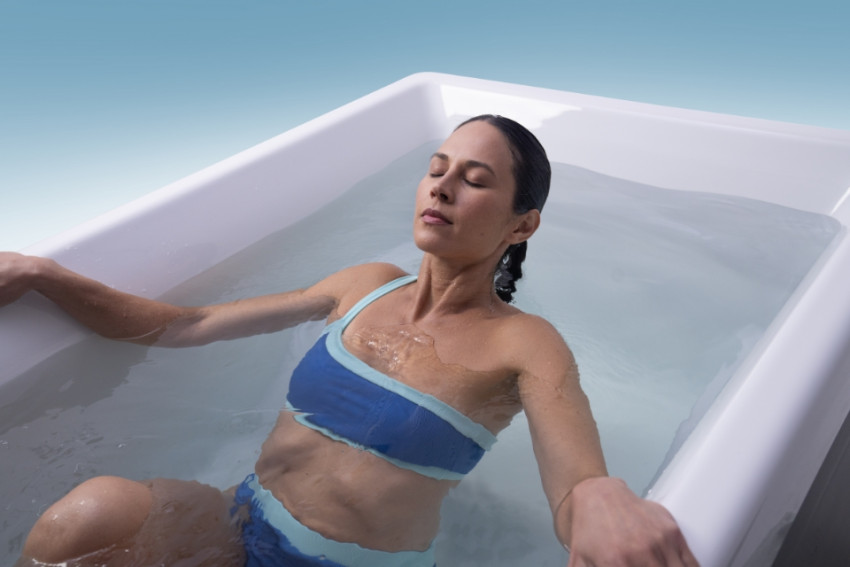Keeping hot tub water fresh and clean is a different proposition to keeping swimming pool water fresh and clean, for one main reason: temperature. The warmth of a hot tub can make it a breeding ground for microorganisms, making chemical sanitation all the more important. But many people find chlorine, the go-to chemical, a little harsh on the nose, eyes and skin, which poses the question: is there another option?
Three main hot tub sanitation options are generally suggested for those who would rather avoid chlorine: salt, bromine and hydrogen peroxide. Two of these, salt and bromine, can be excellent options, though each comes with its own set of pros and cons. The third, hydrogen peroxide, should be avoided altogether.
How exactly does each option work? Which is right for you? Do you even need chlorine in your hot tub? Let’s take a look at each of these questions to find out which hot tub sanitation option is best for you.
Can I use a spa pool without chlorine?
The first question many new hot tub owners ask is simply ‘do I even need to sanitise my water?’ It comes out from the tap clean, clear and fresh, what’s to say it won’t stay that way? Well, as anyone with a water feature or blow-up pool will tell you, fresh water doesn’t stay fresh for long if it sits stagnant.
There’s an added factor in hot tubs: temperature. As you likely learnt in high school science class, the warmer the conditions, the more active microorganisms become, particularly in moisture. In holding stagnant fresh water at around body temperature, a hot tub can quickly become a breeding ground for algae, bacteria and other intruders. Add in the non-living invaders – the dust and dirt, the sweat and skin oils, the plant matter that blows in on the breeze – and hot tub water can go from clear to coloured and cloudy in surprisingly quick time.
A solid maintenance regime therefore plays a critical role in keeping your hot tub water clean, clear, soft and fresh. And chemical sanitation is perhaps the most important element of that maintenance regime, as it takes care of the foreign bodies that you often can’t see until it’s too late.
How does chlorine in a spa pool work?
Chlorine uses a relatively simple chemical reaction to kill bacteria and other microorganisms. When you pour chlorine into a hot tub it breaks down into a number of chemicals, two of which kill microorganisms through ‘oxidation’ – they attack lipids in the cell walls, then destroy the contents of those cells, rendering the microorganism harmless.
- Hypochlorous acid acts quickly, oxidising a microorganism in seconds.
- Hypochlorite ion oxidises slower, taking up to half an hour.
This forms a one-two punch against microorganisms – if the hypochlorous acid doesn’t get them, the hypochlorite ion will. The effectiveness of chlorine is impacted by the pH of the water, with the ideal range being 7-8pH, or slightly basic/alkaline. Sunlight speeds both oxidation processes up, and as the chemicals oxidise they break down into a number of other chemicals including ammonia, or into single atoms, rendering the chlorine harmless. Because the chlorine breaks down, you need to add it to your hot tub regularly.
While effective at killing microorganisms, the chemical processes of chlorine lead to some of its less enticing characteristics. It has a distinctive smell (due in part to the ammonia it produces), it can aggravate skin, and it can cause fabrics to fade. If chlorine is added in too high a concentration, it can even lead to harmful “off gassing” hovering above your hot tub as well as damage to your spa equipment.
These negatives are what lead many to ask about chlorine alternatives.
What can I put in my hot tub instead of chlorine?
When searching for a chlorine replacement, it’s important to remind yourself of the primary role of chlorine: sanitation. You should aim for any chlorine replacement to be equally as efficient as chlorine in killing microorganisms, because if it isn’t, your problems will extend far beyond a powerful smell and faded clothes.
That said, three chlorine-replacement candidates are generally suggested.
Salt
Of the three non-chlorine sanitation options, salt is perhaps the frontrunner. This is because salt can be used to gently generate chlorine.
An example is in Hot Springs FreshWater™ Salt System, which uses clever chemistry, in the form of a titanium cartridge, to create all-natural chlorine. When salt interacts with the cartridge it’s turned into chlorine, at which point it begins to sanitise your spa water. Simply replace the cartridge every four months, and add a small amount of salt as needed, and you’ll enjoy:
- Perfectly soft, fresh and natural-feeling water that avoids itchy and dry skin and eyes.
- Fewer chemicals and associated odours.
- Less maintenance and more soaking time.
- A reduced need to drain and refill your hot tub, with water kept fresh and soft for up to 12 months!
The FreshWater Salt System was pioneered to reduce the amount of harmful chemicals in your spa water, while also making maintenance easy. Automatic prompts alert you on when you need to balance your spa water, ensuring it's always ready for a soak. The FreshWater Salt System is available on all Highlife® Collection and Limelight® Collection spas.
Bromine
In some ways bromine can be thought of as the hot tub equivalent of chlorine. The reason? It dissolves slower and disinfects better at higher temperatures, it’s less impacted by pH swings, and it is far less irritable to the skin, making it perfect for an extended soak. It’s also known to have an almost imperceptible odour, is easier on fabrics, and because it dissolves slower, it doesn’t need to be added as often - particularly if you enjoy the FROG™ system that comes standard in the Hot Spring Hot Spot® hot tubs.
Another cartridge-based innovation, the FROG In-Line Sanitation System uses a mineral mix to lower bromine use by up to 50%, making for an even more comfortable soak. These set and forget cartridges can also be left alone for weeks at a time, which again means less work and more play!
Hydrogen peroxide
The last and definitely the least of our three non-chlorine options is one we feel the need to mention purely because it often comes up in this conversation. Hydrogen peroxide – the chemical that bleaches your hair – is seen by many as an even gentler option than salt and bromine. But gentle it is not. There are a number of reasons to avoid using hydrogen peroxide in your hot tub, most notably:
- It’s dangerous: The hydrogen peroxide used for hair bleaching is a 3% concentration. The hydrogen peroxide used in some pools is up to 35% concentrated, making it a truly hazardous material.
- It is ineffective: Hydrogen peroxide doesn’t kill microorganisms as efficiently as either chlorine or bromine.
- It is expensive: Not only is hydrogen peroxide expensive, because it’s an inefficient sanitiser, you need to use more of it more regularly. You also need to install an ozonator, and you could void your hot tub’s warranty.
- It can damage spa equipment: Spa machinery isn’t built to handle hydrogen peroxide, so the chemical can do real damage to your hot tub.
In short, hydrogen peroxide should be avoided at all costs, particularly when there are safe, gentle, efficient and cost-effective options like chlorine, salt and bromine available.
Do you need to sanitise your hot tub? Most definitely. Do you need to use chlorine? Not necessarily. There are a number of options at your disposal, and you can find the ideal one for your situation by talking to the experts at Hot Spring. Get in touch today!


